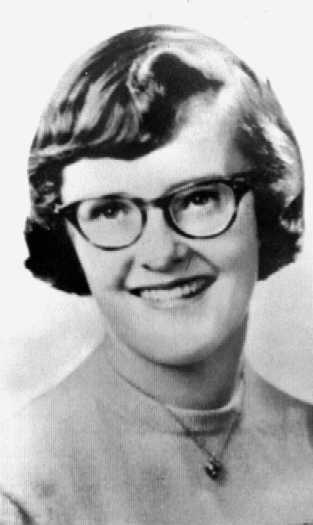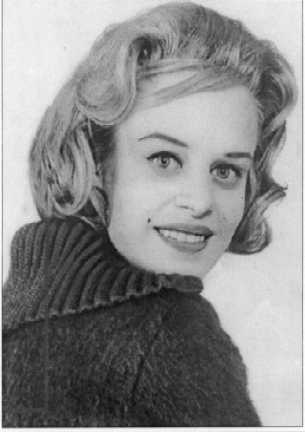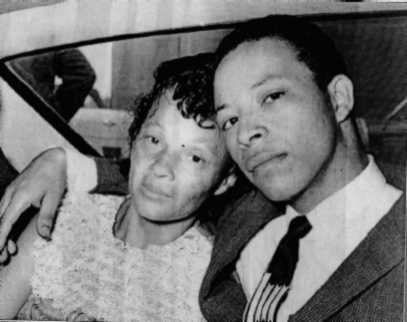|
The Wylie-Hoffert Career Girl Murders By Marvin Smilon |
|
|
|
|
|
The victims:
Emily Hoffert and Janice Wylie, brutally slain in August of 1963. By Marvin Smilon August 28, 1963 is best remembered as
the date of Martin Luther King Jr.'s historic March on Washington in support
of civil rights and his memorable "I have a dream" speech. But on
that same day, two young career girls, Janice Wylie and Emily Hoffert, were
brutally murdered in their apartment on the fashionable Upper East Side of
Manhattan. This led to a series of events that shook the whole city -- the
New York City Police Department in particular -- in ways that still echo,
even though those events have been long forgotten by nearly everyone except a
few who had a personal involvement in the case. It also taught a young New
York Post police reporter a lesson he never forgot. I was that young reporter and the lesson
I learned was that relying on "conventional wisdom" is not always
wise. The gory killings were dubbed the
"Career Girl Murders" by the tabloids and it heightened an
increasing awareness and apprehension by the public that something was
happening that was fundamentally changing New York City. There were clear signs in the early
1960s that crime was increasing dramatically and the newspapers -- especially
the tabloids -- were feeding into those fears. Even the then liberal New York
post was devoting as much or more space to crime stories as its tabloid
competitors. The investigation of the sensational
murders was front-page news for months until a much more sensational and
significant murder took over the front pages of every newspaper in the world
on November 22, 1963, when President John F. Kennedy was assassinated in
Dallas. Besides an occasional article about the
status of the case like one in the New York Herald Tribune in March of 1964,
headlined "Our City's Number One Unsolved Murder: Who Killed The Career
Girls?", not much was written about the murders in late 1963 and early
1964. This near silence about the case ended abruptly with no warning at 3:30
a.m. on April 25, 1964 when a bulletin came across the AP machines in every
New York City newspaper city room and TV and radio news department
announcing: "A 19-year-old Negro has admitted
slaying Janice Wylie and Emily Hoeffert [sic] in their East Side apartment
last August 28, Deputy Police Commissioner Walter Arm said early today."
The bulletin added that the suspect had been identified as George Whitmore,
Jr. and was being held in the 73rd Precinct in the Brownsville section of
Brooklyn. Since I was the Post's police reporter
in Brooklyn in 1964, within minutes of the bulletin, the phone in my Queens
home began ringing. I was informed of the break in the murders and instructed
to get over to the 73rd because a press conference was scheduled there to
make the official announcement. The scene at the precinct, which mirrored its
poor run-down neighborhood, was not unexpectedly chaotic with reporters,
photographers and TV and radio reporters crowding into a tiny squad
commander's room where the NYPD Chief of Detectives Lawrence McKearney was
about to hold a much anticipated press conference. As reporters headed toward
the room, where they eyed a 19-year-old scrawny, shabbily dressed youth with
an acne scarred face and a confused, frightened yet strangely passive almost
gentle look, peering out from a locked cage where he was being held. Reading from his notes, McKearney gave a
precise narrative. He told reporters that Whitmore had been arrested the day
before as a suspect in an assault on a woman in Brownsville. After being
identified by the victim, Whitmore had voluntarily blurted out confessions to
that crime, a murder of another woman in Brooklyn, and -- finally what the
reporters had all come for -- to the Wylie-Hoffert murders. McKearney said
with obvious satisfaction, "We got the right guy -- no question about
it," he added. "He gave us details only the killer could
know." McKearney disclosed only part of the
Wylie-Hoffert confession and with the aid of detectives who had interrogated
Whitmore, answered a barrage of questions about the Manhattan murders, posed
by the noisy, unruly reporters. Whitmore lived in Wildwood, New Jersey, with
his father who was separated from his mother but frequently came to New York
to stay with his mother and other family members who lived in Brownsville,
McKearney said. He described the suspect as a "drifter" who had
taken a subway to Times Square to sightsee and then randomly wandered up to
East 88th Street. According to McKearney, Whitmore told police that he
decided to see what was on the roof of a building where the two victims lived
and on the way up, apparently on an impulse, entered the front door of the
apartment where they lived together. According to the Chief of Detectives,
Whitmore admitted that after finding the two women there, he had used a coke
bottle and three knives, breaking the blades of two of them, to beat and
butcher the two women and then tied the bloody bodies together. The suspect
admitted that he washed his hands before leaving the blood splattered
apartment and its gruesome contents the same way he entered, taking with him
several photographs, one of which had been found on him, McKearney added. After phoning in my notes to a rewriteman in order to make the first edition |
|
|
of the then afternoon Post, I ran back
to the precinct to see if any more information was available. Things were
winding down but a few reporters were still peppering McKearney with
questions. No, the suspect did not have a criminal
record, said McKearney, who then became defensive when reporters badgered him
to describe any other evidence, except his confession. He said a picture of
Janice Wylie believed to have been stolen from the scene of the crime had
been found on Whitmore when he was arrested. He refused to show the picture
because it was evidence and seemed to waver on how sure he was that it was a
picture of the victim. He also said none of Whitmore's fingerprints were
found in the apartment because the suspect said he had worn gloves while
killing the girls. Obviously tired after being up all night and annoyed at being
grilled like a suspect himself, McKearney in exasperation repeated what he
had said earlier that he was sure they got the right man because he had given
them facts only the killer could have known and said they had a lot more
evidence besides his confession. I spent the rest of the day covering the
story, and before getting a goodnight, Stan Opotowski, editor in charge of
the City Desk that day, asked me if I had any ideas for a second-day story.
When I hesitated he suggested profiles of the detectives who broke the case.
Conventional wisdom certainly dictated that that ideas was the safe kind of
follow-up but when I hesitated again, he asked me if there was a problem. I
said I wasn't sure, but I was just uncomfortable about
the scenario laid out by the police and there were a lot of questions in my
mind still unanswered. For instance: How and why did Whitmore pick that
neighborhood, the building and the apartment for his rampage? Why was there no physical evidence from
the blood splattered murder scene except the picture, which appeared to be
shaky at best? And, why was the accused carrying around
a pair of gloves in August since he apparently had no plans to commit this
crime? There was an added piece of information
that had slipped by me and others at the press conference about the police
boast that only the killer had the detailed information about the murders
provided by Whitmore. In fact that was not quite accurate because one of the
detectives questioning Whitmore had worked on the Wylie-Hoffert murder investigation
for three months and he also knew those details. Opotowsky told me to forget about the
overnight and we had a whole weekend to come up with something. In the next
few days the Brooklyn detectives who broke the case were lionized. There were
exclusive first person stories on how the detectives got Whitmore to confess
and how a picture of one of the victims stolen from the murder scene had been
discovered on the suspect. Newspapers had heaped honors on the officers
involved in "solving" then murders including "Public Protector
Awards" from the Journal-American for "brilliant police work."
It looked to me that conventional wisdom
won out this time and I felt I had made the biggest goof of my young career.
I spoke to Opotowsky the next week, sharing my misgivings with him and
apologized. Opotowsky, a taciturn ex-World War II Marine Corps war
correspondent, who sadly died last year, reassured me. He told me that if he
didn't have confidence in my judgment, he wouldn't have me working for him on
the street and advised me to wait and see how it all played out. He also
assigned Irving Lieberman, a veteran Post investigative reporter and a highly
respected and beloved uncle of mine, who had been covering Brooklyn for
decades, to look into the case. Within weeks, rumors began floating
around town that there were problems with the Whitmore case, and Manhattan
detectives and the Manhattan District Attorney's office, under the legendary
Frank Hogan, hadn't closed the books on the case but were taking a closer look
at the arrested suspect. Brooklyn authorities quietly scoffed at these rumors
citing jealousy on the part of their more celebrated counterparts in
Manhattan as the reason for the reports. However, the Brooklyn prosecutors
insisted on trying the two Brooklyn cases before the highly publicized
Manhattan double murder and noted that if, Whitmore were convicted in those
two cases, it might not be necessary to even try him on the Wylie-Hoffert
murder. Behind the scenes the Manhattan
detectives were checking and rechecking every detail of the case against
Whitmore. They were troubled by the near total lack of corroborating evidence
for his confession except the photograph that was found on Whitmore. They
first sought to check out the photo supposedly of Janice Wylie. The young
woman's friends and relatives could not positively identify the photo as that
of her, but after showing it around Wildwood, New Jersey, the detectives
discovered it was a photo of a young woman who resembled Janice Wylie but
lived in Whitmore's hometown. At the same time they uncovered witnesses who
remembered seeing Whitmore around the town on the day of the March on
Washington. The Manhattan detectives were convinced Whitmore had an airtight
alibi because he could not have been in two places, three hours away at the
same time. The rumors persisted and stories began
appearing in the New York newspapers with one reporting that Manhattan
detectives had focused in on a drug addict who lived only a few blocks from
the Upper East Side murder scene as the prime suspect in the double murder.
On January 26, 1965 Richard Robles was arrested for the murders of Janice
Wylie and Emily Hoffert and the charges against Whitmore were dropped. Robles
was ultimately convicted of the double homicide and is serving a life
sentence. All the other charges against Whitmore were dropped but only after
years of litigation including attempted rape and assault.
Photo by William Jacobellis/New York Post In his lawyer's car,
George Whitmore, with his mother, leaves Brooklyn Supreme Court after finally
being set free. The heroes of this story were of course
the Manhattan detectives and prosecutors who turned up the evidence
exonerating Whitmore while at the same time gathering other evidence that led
to the arrest and conviction of the real killer. But the reporters, including
Lieberman of the Post and Selwyn Raab, then of the World-Telegram and Sun and
later the New York Times, who wrote stories that helped to expose this
miscarriage of justice also deserve credit for performing a public service in
the very best tradition of American journalism. Several books were written
about the case, including one by Raab entitled "Justice in the Back
Room," which was turned into a movie starring Telly Savalas, as the
Manhattan detective who helped to clear Whitmore. The movie led to the
long-running popular TV series "Kojak" starring Savalas. After the exoneration of Whitmore,
Opotowsky called me over to his desk and just said with the tiniest of
smiles, "See, you were right." I learned two things from this case
-- that conventional wisdom can too easily turn into a trap and the
importance of editors with the backbone to stand up for their reporters. ____________________________________________ Marvin Smilon was a reporter for the New York Post for 35 years,
winning numerous awards for investigative reporting during that time. Since
1994 he has been the Public Information Officer for the Office of the United
States Attorney for the Southern District of New York.
|
|


